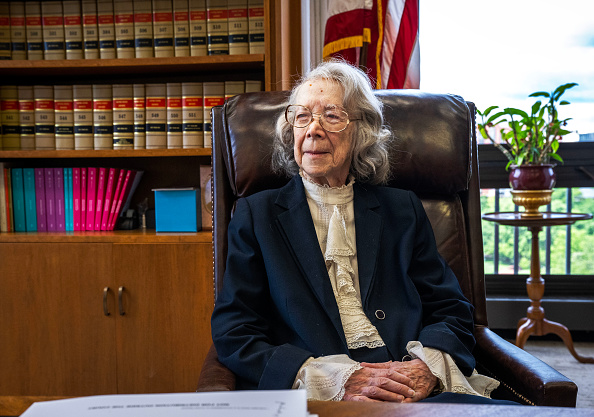Letters: Diverse Judges

Shutterstock
Diverse judges
In reference to “Reimagining Federal Courts,” April-May, page 9, I served as a law clerk for two district court judges: a white male appointed by President Donald Trump and a Black female appointed by President Barack Obama.
As individuals, the former was politically conservative and the latter liberal. As judges, they approached cases in the exact same way: The first question they would ask when we began discussing a pending motion was, “What does the ___ Circuit say?” Both let the law, and not their political ideologies, lead them to the result.
Jo Neuman
Mandeville, Louisiana
Liane Jackson’s “Reimagining Federal Courts” rightly emphasizes the importance of restoring public trust in our courts. To that end, diversity on the bench should be pursued with vigor.
In comparing the percentage of nonwhite Donald Trump-appointed Article III judges (16%) to Barack Obama’s (36%), she also correctly characterizes this aspect of Trump’s legacy—the least-diverse pool in the modern era—as disappointing. But Trump did appoint a slightly greater proportion of women to the bench (24%) than either Bush.
Still, the political nature of appointments cannot be ignored. To the extent that presidents appoint members of their own party, Democrats enjoy demographic advantages over Republicans in achieving diversity. It’s unfair to suggest that Republican presidents should have impaired discretion on account of the less-diverse composition of their party rolls. A better rubric would take account of the number of opposing-party appointments—if any—and independents. If only presidential appointments were driven more by judicial qualifications, character, talent and excellence than by party affiliation.
Thomas E. Simmons
Vermillion, South Dakota
‘Unqualified psychobabble’
I was a licensed psychotherapist before I became a lawyer, and I am a Californian to boot. But am I alone in engaging in mental eye rolls on what I consider to be unqualified psychobabble in the On Well-Being columns?
Surely there is something informative and entertaining that could go in its place. How about a column that contrasts some aspect of U.S. law with other countries’ laws?
Linda J. Vogel
Pomona, California
Interpreting the Constitution
Professor Philip Meyer’s informative article “Origin Stories,” February-March, page 24, leaves out one particularly important voice. No one has had a greater impact on interpreting the Constitution than U.S. Chief Justice John Marshall.
Marshall was of the Revolutionary period. He was Thomas Jefferson’s cousin and rival, a friend of James Madison, and especially of George Washington, with whom he served at Valley Forge. He played a prominent role in Virginia’s ratifying convention, and most important, he sat as the fourth chief justice for 34 years.
Serving early in the court’s existence, he rendered opinions (often unanimous) that read the Constitution broadly. He created judicial review, a concept nowhere mentioned in the Constitution.
After 200-plus years, it seems futile to search for the precise meanings of words used by the framers or as understood by the public at that time. Marshall, as a contemporary of that era, certainly didn’t feel the necessity. Even Justice Antonin Scalia recognized that originalism, as that effort is known, can be a dead end. For example, he conceded that in the late 1700s, whipping prisoners would likely not been a violation of the Eighth Amendment prohibition against cruel and unusual punishment, though clearly abhorrent today.
Marshall had it right: Be instructed and guided by the words of the Constitution, but if possible, make the document work for the good of a growing and complex country.
Calvin Bellamy
Munster, Indiana



